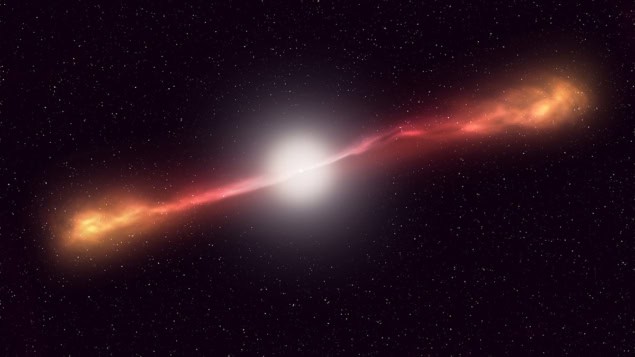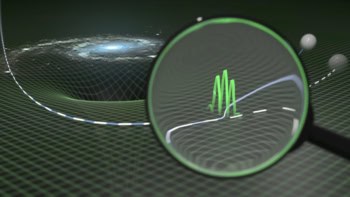
As they approach a black hole’s event horizon, particles of accreting gas can take on opposing orbital trajectories – remarkably similar to the paths produced in manmade particle colliders. Using advanced new models, Andrew Mummery at the University of Oxford, together with Joseph Silk at Sorbonne University, showed how such particles could collide at colossal energies, with detectable collision products that could offer valuable new insights for particle physics.
Within a black hole’s accretion disk, gas particles travel in circular orbits that gradually shrink under its immense gravity. Once an orbit contracts beneath a critical radius, it becomes unstable, and the particles it carries will suddenly plunge toward the black hole.
“Long ago, Roger Penrose showed that these particles could extract energy from the spin of massive black holes in the region where they decay,” Silk explains. “This happens in the ergosphere – the region just outside the event horizon where debris can gain energy from the black hole’s intense gravitational and rotational fields.”
In the theory described by Penrose, a particle approaching a black hole splits into two fragments – possibly through a collision or spontaneous decay. After the split, one fragment falls into the event horizon, while the other gains enough energy from the black hole’s spin to escape its gravity – exiting the ergosphere with more energy than the original particle.
Building on this idea, Silk and two of his previous collaborators – Maximo Bañados and Stephen West – proposed an alternative escape mechanism. Their idea involves gas particles in retrograde orbits (moving opposite to the black hole’s spin) within the accretion disk. Since a retrograde orbit becomes unstable at larger radii than a prograde orbit (movement in the same direction as the black hole’s rotation), these particles fall farther before reaching the ergosphere, allowing them to gain more energy through gravitational acceleration.
Within the ergosphere, Bañados, Silk and West considered how these now highly energetic particles could collide with those originating from prograde orbits, travelling in opposite directions. If this occurred, the relative velocity between the two would be enormous – imparting extreme relativistic energies to their collision products. The trio proposed that some of these products could escape the ergosphere with more energy than either of the original particles.
In their latest study, reported in Physical Review Letters, Silk and Mummery explored this possibility in greater detail. They used models recently developed by Mummery to simulate the flow of particles accreting onto rapidly spinning supermassive black holes.
“We showed that the infalling gas would develop a pattern of turbulent rotating and counter-rotating vortices as it plunged into the black hole’s ergosphere,” Silk explains. The rotation direction of each vortex depends on whether the particles originated from prograde or retrograde orbits within the accretion disk.
When particles travelling in opposite directions collide in the ergosphere, their circular paths resemble the magnetically guided trajectories of protons and heavy ions in manmade particle colliders, such as CERN’s Large Hadron Collider – only on a vastly larger scale. “We found that the collisions occurred at hundreds of times higher energies than those reached in any existing collider, and would approach or even exceed the energies expected for the proposed Future Circular Collider,” Silk notes.

Have alien civilizations built cosmic accelerators from black holes?
At such colossal energies, Mummery and Silk predict that the collision products could include gamma rays and ultrahigh-energy neutrinos, which might be detectable from nearby supermassive black holes – such as Sagittarius A* at the centre of our own galaxy. As a result, the process could offer an entirely new approach to observations in particle physics.
“Our predicted signatures would complement those of the next generation of giant particle supercolliders planned by CERN and in China, helping to provide evidence of new particle physics beyond the Standard Model,” says Silk. In particular, the duo suggest that these signatures could lead to a highly sensitive probe of dark matter – potentially offering more robust tests for candidates such as weakly interacting massive particles.



